The Original Restoration Magazine for people who are passionate about old houses to repair, rehabilitate, update, and decorate their homes; covering all classic American architectural styles,—from the earliest Colonial-era buildings to grand Victorians of every variety to Arts & Crafts bungalows and mid-century ranches.
Uh-oh, coming up!
SIDE NOTES
Old House Journal • VOLUME XLX, ISSUE 5
Eye Openers • Stylish bits of trompe l’oeil, magnificent faux, and optical illusion.
Bathing Beauties • Useful upgrades and little luxuries complete the bathroom.
Houses Before 1820 • Additions may make it hard to recognize a very old house but these are unscathed.
UTTER RESTORATION • Our past two homes were custom-builds. Time to take on the restoration of a Victorian!
THE SIGNIFICANCE OF lighting & hardware • Period conventions are important: Can you imagine a Sputnik chandelier in a 1740 house, or gaslight-era sconces in a mid-century ranch? How about forged-iron rat-tail hinges in a Moderne apartment? Still, old houses changed with evolving technologies (think electricity), leaving us with a mix of fixtures and fittings. Relying on classic designs, you can introduce a variety of materials and finishes without creating a jumble.
style + HARDWARE • Many period-influenced styles of hardware are available in all price ranges. Cup or bin pulls, familiar in Victorian- and Arts & Craftsera kitchens, come in iron, brass, nickel, and bronze, in designs from basic to ornate. Bronze, iron, and copper reproductions may be right out of The Craftsman magazine or mimic rustic twigs or Japanesque bamboo. Early American or Colonial styles are a perennial standard. Neoclassical motifs fit a wide range of homes. Hardware from the early and mid-20th century are stylish and colorful, including cloisonné (true house jewelry!), Depression glass knobs, Fiesta-colored ceramics, and Streamline drawer pulls. Antiqued brass or bronze lighting with nickel faucets is a nice look.
OIL LAMPS
Painted Furniture in a Nursery • From the paint brochure “A Color Scheme for Every Room,” 1928.
The Furnished Bathroom • It’s one approach to designing a bath in an early house.
DETAILS IN wood SUCCESSFUL RESTORATION PROJECTS • Restoring architectural elements damaged over time requires ingenuity and labor but it isn’t necessarily difficult. Two recent projects—one pro, one DIY—show how perseverance brings wood ornamentation beautifully back to useful life.
detailing wood • Strip, repair, and finishsand any wood restoration project.
STUFF A CONTRACTOR SCREWED UP
Restoring Hardware • This DIY owner, a self-described hardware addict, shares tips for finding, repairing, and restoring arcane period hardware for doors and windows.
Functional Rim Locks from Parts
AGING NEW SCREWS
Drunk with possibility at Liz’s Antique Hardware • Visit this mecca for a revelation and education—or to solve your vintage-hardware problems. Online, too!
From a Church Organ • Fancy work in red oak doesn’t go to waste.
SIMPLE ROOF REPAIR TIPS • Every roofing material has a lifespan. Use these methods to fix minor breakage or missing units, extending the life of the roof.
Securing H Hinges • If you to live in an 18th- or early 19th-century house, you might have closet doors or cabinets hung on wrought-iron H or HL hinges. In modern-day revivals, this type of hinge is usually steel stamped to look like wrought iron, secured by screws with square heads that mimic the nails used in the past. Over time, nails in original hinges may loosen and fall out. Screws can be used during repairs but they won’t duplicate the look of the original. You need small cut nails (wrought nails are not readily available). These can be obtained...
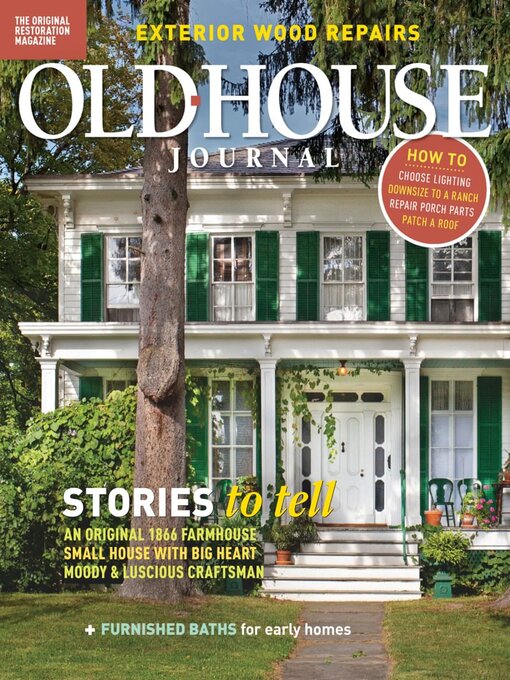
 May/June 2024
May/June 2024
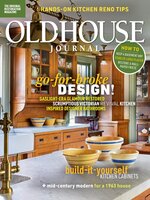 March/April 2024
March/April 2024
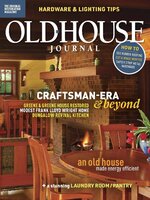 January/February 2024
January/February 2024
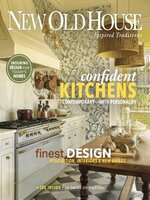 New Old House 2024
New Old House 2024
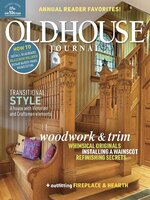 November/December 2023
November/December 2023
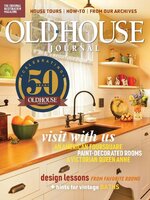 September/October 2023
September/October 2023
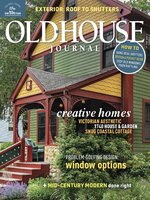 July/August 2023
July/August 2023
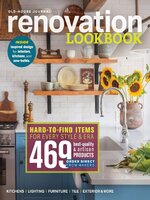 Renovation Lookbook 2023
Renovation Lookbook 2023
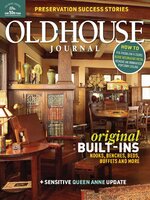 May/June 2023
May/June 2023
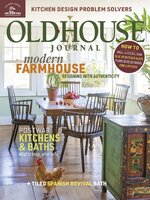 March/April 2023
March/April 2023
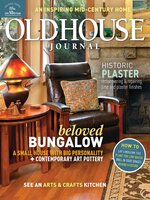 January/February 2023
January/February 2023
 New Old House 2023
New Old House 2023
 November/December 2022
November/December 2022
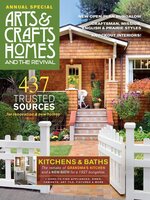 Arts & Crafts Home 2023
Arts & Crafts Home 2023
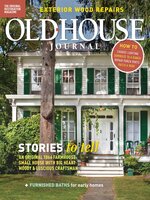 September/October 2022
September/October 2022
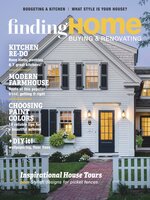 Finding Home 2022
Finding Home 2022
 July/August 2022
July/August 2022
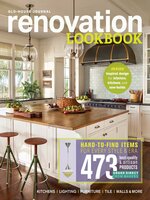 Design Center Sourcebook 2022
Design Center Sourcebook 2022
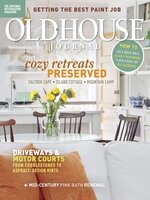 May/June 2022
May/June 2022
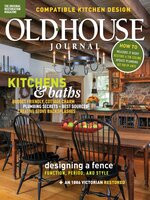 March/April 2022
March/April 2022
 January/February 2022
January/February 2022
 New Old House 2022
New Old House 2022
 November/December 2021
November/December 2021
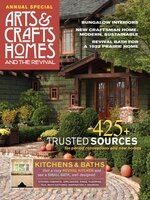 Arts & Crafts Resource Guide 2022
Arts & Crafts Resource Guide 2022
